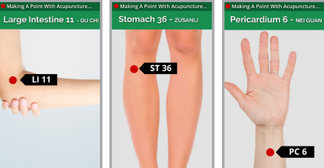We are the products of nature. It is no surprise to find that we benefit physically and mentally from being close to the natural world. In the 11th century, the poet Zhou Bangyan compared sunbathing in winter to the drinking of wine. Zhou Mi (1232-98) in ‘Notes on the Southern Dynasty’ wrote that sunlight is no doubt conductive to good health, as it can give a sudden boost to a person’s vital energy.
Sunshine has been in and out of fashion over the last hundred years or so. People have always been exposed to the sun, hunting and gathering without the benefit of sunscreen or sunglasses. One hundred years ago the average exposure to the sun was much more than it is today. And yet, the incidence of melanoma has dramatically increased, even as the average exposure to the sun has decreased. Many studies have shown a decrease in the basal metabolism of both animals and people when they do not receive enough sunlight. For people in colder climates, the shorter days of winter and late fall can be problematic. Bundled up from head to toe, millions leave for work and return from work in the dark. And the weather keeps them inside during the day, for weeks and even months, without exposure to sunlight. This single factor is undoubtedly what triggers flu epidemics and why they tend to occur primarily during the cold months.
The discovery of vitamin D in the 1920s made sunbathing become healthy, fashionable and even attractive. Sunbathing was found effective for rickets in children, as a remedy for rheumatic disorders, gout, diabetes, chronic ulcers and wounds. A 20-year study of nearly 30,000 Swedish women found that those who avoided the sun were approximately twice as likely to have died as those who did not. The authors conclude that at least in countries with low solar intensity, avoiding the sun is harmful to health.
Vitamin D, the sunshine vitamin, promotes the body’s absorption of calcium, essential for the normal development of healthy teeth and bones, hearing loss (otoscelorosis), depression, osteoporosis, breast and prostate cancer to name a few. Also it enhances enzymatic reaction into proper metabolism – energy production. We can take vitamin D in a supplemental form but even a diet extremely high in vitamin D cannot raise vitamin D blood levels as high as five minutes of exposure to the sun can.
Neils Finsen, Danish medical researcher and Nobel Prize awarded in medicine, discovered ultraviolet light treatment treat an infectious skin disease called lupus vulgaris. Now we know that it is the effect of sunlight on the Langerhans cell in the skin that accounts for the most amazing of all stories regarding the use of sunlight to treat disease. These cells are vital to immune-system function. They are important antigen-presenting cells, communicate the infection to other immune cells, and initiate a proper immune response. A study published in Finland found when skin is exposed to natural ultraviolet light, even high doses of it, the Langerhans cells are actually up-regulated, stimulates and enhances immune system function and efficiency.
As far as skin cancer is concerned, the consensus appears to be that while non-melanoma skin cancer (basal cell carcinoma and squamous cell carcinoma) is related to excessive exposure to ultraviolet light in the lab, the link with the more dangerous malignant melanoma is not proven. We know in our hearts that sunshine is warming, healing and invigorating and if we use our common sense to stay under the sun in proper way there are more benefits than harm if any. Sunshine in New York winter is a blessing and free tonic for anyone who enjoys.




